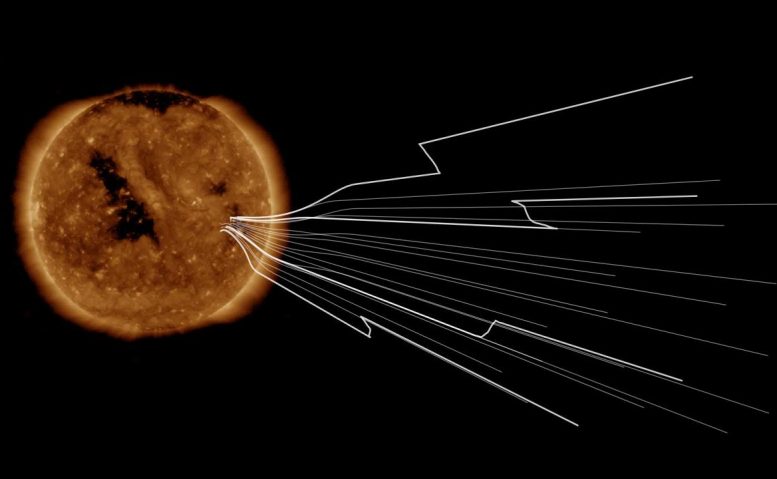Description
The concept of sound waves is familiar to us since they fill the air around us. However, in more exotic environments like the Sun's atmosphere and the Solar Wind (the stream of plasma constantly propagating outwards from the Sun) a whole host of different waves are supported that we don't see in our everyday lives. Rather than a predominantly neutral gas like air, the solar atmosphere/wind is comprised of super-heated electrically conducting plasma threaded by a magnetic field. The coupling between the plasma and magnetic field leads to several different types of waves, with sound waves being a limiting case.
Mathematically, the coupling between the fluid-like plasma and the magnetic field is described by the equations of Magnetohydrodynamics (MHD). MHD is essentially the fusion of Navier Stokes and Maxwell's equations. The different wave modes can be explored by considering the linear behaviour of these equations.
 Magnetic switchbacks (the S-shaped kinks) are newly discovered phenomena in the Solar wind that can be modeled with linear wave theory (from Science Daily).
Magnetic switchbacks (the S-shaped kinks) are newly discovered phenomena in the Solar wind that can be modeled with linear wave theory (from Science Daily).
This project will start by studying the classic wave modes in uniform media: Alfven waves and the fast and slow magnetoacoustic waves. After this there is plenty of scope for specialisation. For instance the effects of an expanding flow can be incorporated to reproduce and/or extend recent work on magnetic switchbacks in the solar wind (as shown above) (extending Zank et al. 2020). Or how the Sun's complex magnetic field guides and shapes the different wave modes could be studied (as in McLaughlin et al. (2019)). Both investigations turn into initial value problems which require some Python coding to solve. For those more keen on numerics the method of McLaughlin et al. (2019) can also be generalised to work with magnetic field data extrapolated from solar observations.
Prerequisites
Partial Differential Equations III is essential. Fluid Mechanics III would also be useful and it would be helpful (but not essential) if you were to take the new 4H course "Topics in Applied Mathematics" alongside this project. Part of the project involves building your own Python code to solve the wave equations as initial value problems. However, only basic Python knowledge is required for this aspect of the project.
Resources
There are several excellent sets of lecture notes online covering MHD waves. See for instance these notes from St. Andrews or Sheffield. A useful textbook description of how to solve initial value problems in Python is given in Chapter 7 of Numerical Methods in Engineering in Python. An excellent textbook explaining the MHD equations and the waves they support can be found here: Magnetohydrodynamics of the Sun.